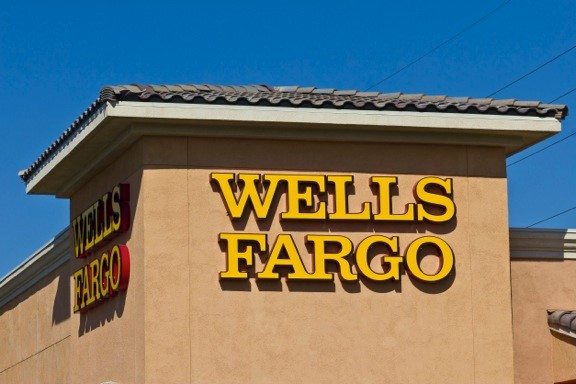
The Consumer Financial Protection Bureau (CFPB) is a government agency charged with the responsibility of making sure that banks, lenders and other financial institutions treat consumers fairly.
After conducting a lengthy investigation, the CFPB assessed a $185 million fine against Wells Fargo & Co. after discovering that at least 5,300 of the bank’s employees had engaged in improper sales practices.
$100 million of the fine will be paid to CFPB, $50 million to the Los Angeles city attorney to settle the matter, and $35 million to the Office of the Comptroller of Currency.
Wells Fargo agreed to the fine without admitting or denying any of the accusations leveled by these agencies. The bank also set aside $5 million for customer remediation.
Wells Fargo, a company with a storied history in this country, engaged in fraud on a herculean level when thousands of its employees opened accounts and moved funds about resulting in bank customers being charged fees for services they knew nothing about.
Last year Los Angeles City Attorney Mike Feuer filed a lawsuit against the bank for its practices of placing employees under “high-pressure” to circumvent the rules in order to meet unreasonable sales quotas.
“When I worked at Wells Fargo, I faced the threat of being fired if I didn’t meet their unreasonable sales quotas every day, and it’s high time that Wells Fargo pays for preying on consumers’ financial livelihoods,” Khalid Taba said in a statement following the CFPB fine announcement.
Just how bad was the fraudulent activities?
The CFPB investigation revealed that Wells Fago employees had set up fake accounts for existing customers that racked up extra banking fees – fees on accounts customers did not sign up for or agree to.
This wasn’t just several instances of bank fraud. Thousands of employees were involved and they created more than 1.5 million deposit accounts without customer authorization.
In addition, more than 565,000 credit card accounts were created, with 14,000 of them racking up $40,000 in different unauthorized fees for customers.
How did they do it?
The employees simply did not seek consent from customers before creating the fake accounts. In fact, some employees went so far as to create fraudulent contact information and PIN numbers for customers.
It is difficult to comprehend how Wells Fargo employees expected to get away with such a massive level of fraud.
And they didn’t.
It was only a matter of time before customers realized they had been signed up for online banking and receiving significant fees from accounts that they did not even consider signing up for.
Fear of the Law, Fear of Losing Your Job

Why would so many employees engage in such fraud?
Wells Fargo’s top management people blamed a few bad seeds and say that they had been taken care of through mass firings; that their behavior was never part of the bank’s standard operating procedure and that management never authorized their illegal behavior.
Former employees like Khalid Taba, however, tell a different story.
They talk about a highly-stressful sales atmosphere and a culture of fear and intimidation. For many, it was either engagement in fraud or job loss. Some employees even got bonuses after opening fake accounts and using proof of those accounts to show how “well” they were performing.
Then, of course, there are the stories of employees who say they tried to alert HR or higher-level officers in the company about the problem. Many say they were simply rebuffed while others complained of being blacklisted from banking jobs.
It’s hard not to believe many of their stories. These fake accounts were traced back to 2011. That’s over five years of shady practices throughout the Wells Fargo banking empire.
How could something like that go on for so long without someone in power noticing?
Well, it turns out that they did know. Sort of.
While the scandal only broke a few months ago, this type of fraud was apparently something Wells Fargo has known about since 2011.
In fact, once the scandal broke, Wells Fargo confirmed that it had fired 5,300 employees since 2011 for committing similar acts of fraud.
Was that the right thing to do, though?
Should lower-level employees have born the brunt of this scandal when many of them claim they felt pushed to their breaking point?
This was certainly not the case for Wells Fargo CEO and Chief Executive John Stumpf. The CFPB made sure that he was held accountable for the actions of his bank and his employees.
After a hearing in which he was grilled by Senator Elizabeth Warren, Stumpf was ordered to forfeit $41 million in unvested stock, forfeit his salary for the time being ($2.8 million annually), and receive no bonus for the year. It is one of the highest penalties ever placed on a bank chief for his or her actions.
Stumpf was still allowed to keep his job, though. And with $247 million in Wells Fargo stock, he certainly has some loose change to throw around.
But on October 12, Stumpf stepped down from his position and did not receive a severance package.
What This Means for You

Investigators will be on the lookout for similar crimes now that this scandal is out in the open. If you find yourself charged, don’t simply take your fate lying down – especially if you felt pressured into doing something against your better judgment.
Those already facing bank fraud charges should also beware that a “Wells Fargo” effect is now in place in which overzealous prosecutors, judges, and others will seek to punish anyone more severely in reaction to the Wells Fargo case.
The best way to get a positive outcome is to work with an experienced Texas white collar crime lawyer who knows how to put together a strong defense and has a track record of success in these types of cases.



